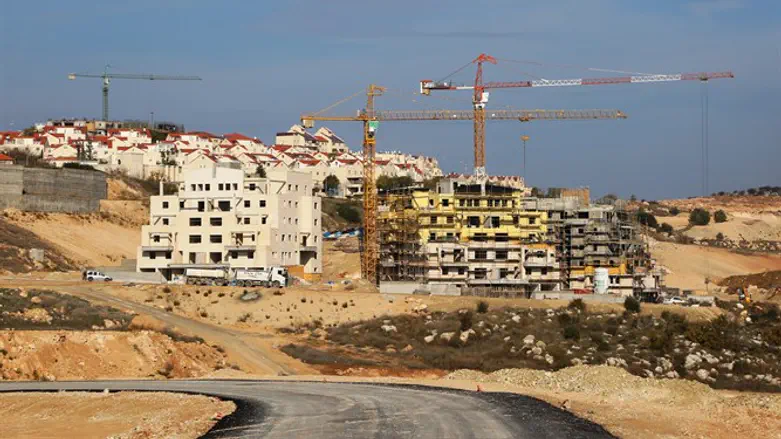
As part of the efforts to relieve Israel's housing crisis, a ceremony was held on Monday celebrating government approval to construct thousands of housing units in Ramat Beit Shemesh D and E.
The new agreement approves 17,000 new apartments and sets aside 530 dunams of land for businesses, companies, and hotels. In addition, the city will receive the budgets necessary to construct infrastructure and improve the city's parks and public transportation.
Beit Shemesh is expected to double in size in the coming years, and the new construction will provide housing solutions for the haredi and general populations.
Participating in the ceremony were Israeli Prime Minister Binyamin Netanyahu, Finance Minister Moshe Kahlon (Kulanu), Construction Minister Yoav Gallant (Kulanu), Interior Minister Aryeh Deri (Shas), Beit Shemesh Mayor Moshe Abutbul, and Beit Shemesh Construction Head Moshe Montag, as well as several other mayors and public figures.
Currently, Beit Shemesh is home to 104,000 residents and 21,000 families. The new agreement will double the city's size, so it becomes one of Israel's largest cities and nearly as large as Be'er Sheva.
Beit Shemesh was first recognized as a city thirty years ago, and is currently Israel's fifteenth-largest city.
"This new plan will double Beit Shemesh's size. That's a huge accomplishment," Netanyahu said. "I see this city as becoming one of the largest cities in Israel. It's developing at a very fast rate, and it is home to haredi, secular, traditional, Ashkenazic, and Sephardic Jews, as well as to new immigrants.
"In all areas of Israel, we must keep to the Torah's ideal of building a united community.
"I'm aware of the problems inherent in the new plan, and so are my ministers, but we will solve these problems by working together. This land, and this city, belong to all of us, and there is room here for everyone.
"We are working to create an amazing future. I can already envision Beit Shemesh reaching half a million residents - and we need to invest in it together."
Abutbul said, "Beit Shemesh is going to become Israel's next metropolis. In addition to the thousands of housing units we are building, we are also creating workplaces and commercial centers for he residents."
"Beit Shemesh is the first city in which we are actively integrating the general population with the haredi population," Gallant said. "We are working together with the understanding that integration is essential. We are working to find what we have in common, not from a place of extremism and estrangement."
"Much time and thought must be invested into finding a unique solution which will benefit all of Beit Shemesh's residents. This case will show how well the haredi and general populations interact in so many places in Israel. I hope this model will succeed in showing how we can work together and compromise."
"The greatest challenge Beit Shemesh faces is to keep the city's various sectors united," Interior Minister Deri added.
Beit Shemesh made headlines several years ago because of confrontations between religious Zionists and a small group of extremist haredi residents who attacked women they felt were immodestly attired. The tension was reflected in the acrimonious atmosphere during 2014 elections for mayor of the city, but is not in evidence today.